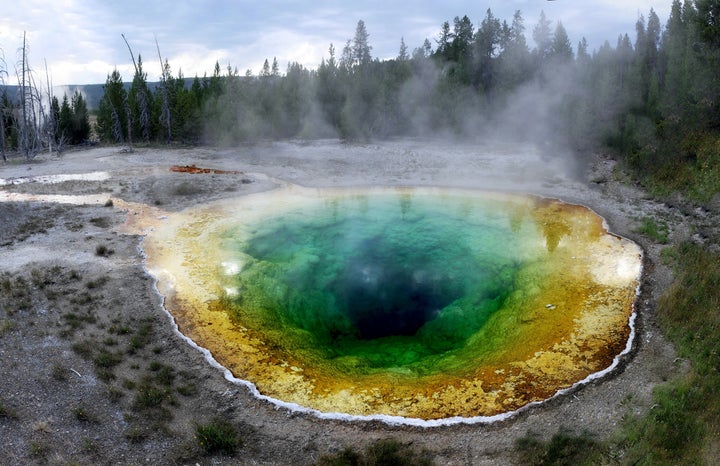No one likes to think about the most apocalyptic ways the human race could be wiped off the face of the planet forever, but for some people it is their job to do exactly that.
And while it seems logical that NASA spends a lot of time looking at threats from space, an expert has now claimed that there are plenty of things here on Earth that could actually present an even greater threat.
Brian Wilcox explained to the BBC why the eruption of a supervolcano, in particular the one in Yellowstone National Park, USA, has been moved to the top of the NASA threat list.

The Yellowstone supervolcano is one of about 20 known in the world, and is considered so deadly because an eruption would produce such quantities of fiery magma that the resulting umbrella of ash clouds would starve the Earth of sunlight for years afterwards.
In what is known as a ‘volcanic winter’, crops would not be able to survive, and as the United Nations has warned food reserves would only last 74 days, the future wouldn’t be looking too promising.
Although these supervolcanoes only erupt between every 100,000 to million years, the last time Yellowstone went was 600,000 years ago.
As a result, NASA decided to dedicate some time and resources to devising a proactive counter-plan that could stop this from happening rather than just dealing with the hideous consequences.
So far the researchers believe that drilling into the base with high pressure water jets, would potentially allow them to cool the magma chamber down so much that they could stop it from reaching the point of eruption.
But there is obviously some risk with such a volatile (and expensive) operation.
Wilcox explained: “If you drill into the top of the magma chamber and try and cool it from there, this would be very risky. This could make the cap over the magma chamber more brittle and prone to fracture. And you might trigger the release of harmful volatile gases in the magma at the top of the chamber which would otherwise not be released.”
However if this plan was successful, not only would this provide a solution for stopping the eruption, but it could also be used to create a geothermal plant that generates electricity, and is sold it on to private companies at a low cost.
“You would have to give the geothermal companies incentives to drill somewhat deeper and use hotter water than they usually would, but you would pay back your initial investment, and get electricity which can power the surrounding area for a period of potentially tens of thousands of years.
“And the long-term benefit is that you prevent a future supervolcano eruption which would devastate humanity,” said Wilcox.
